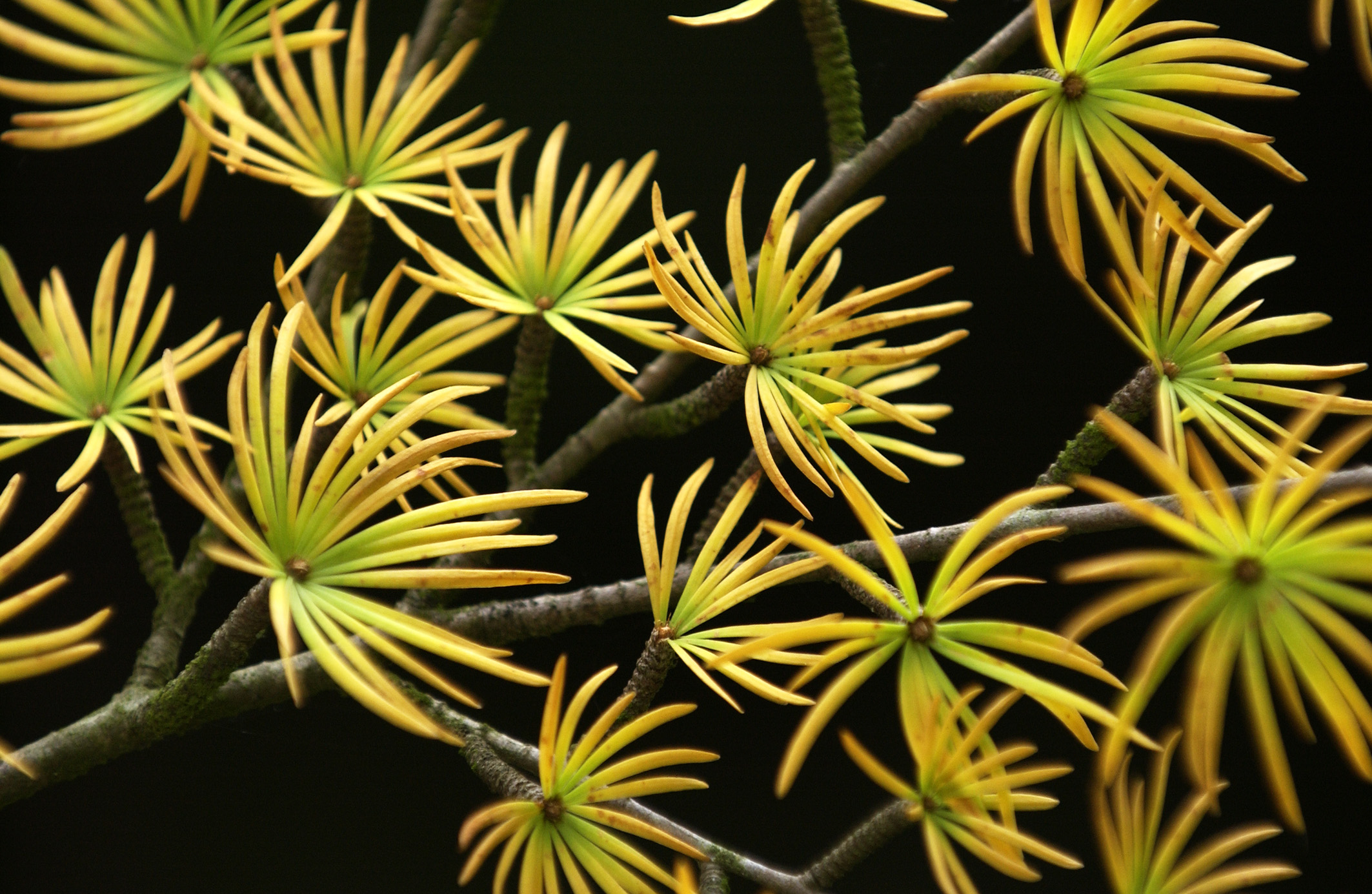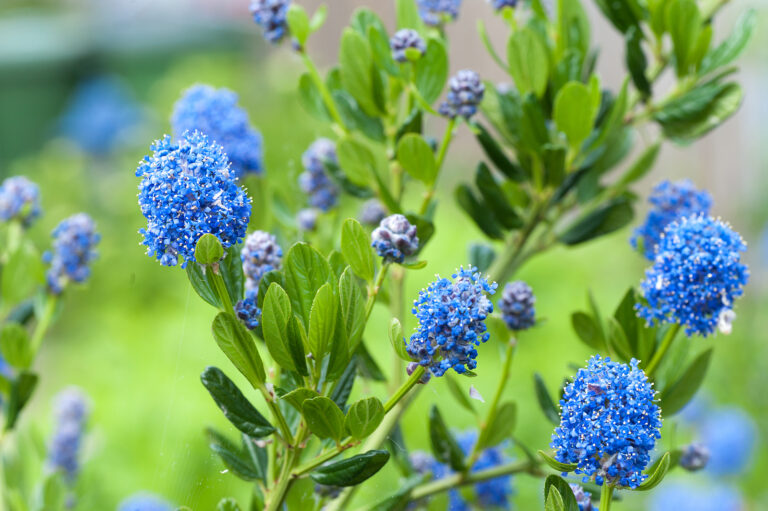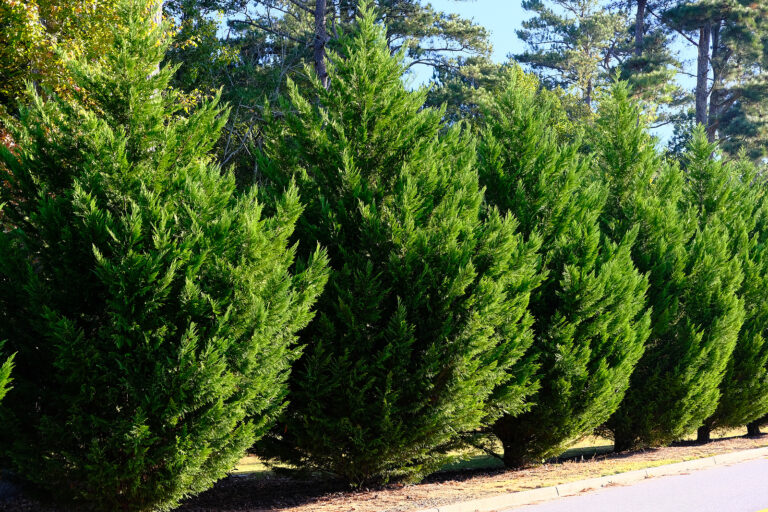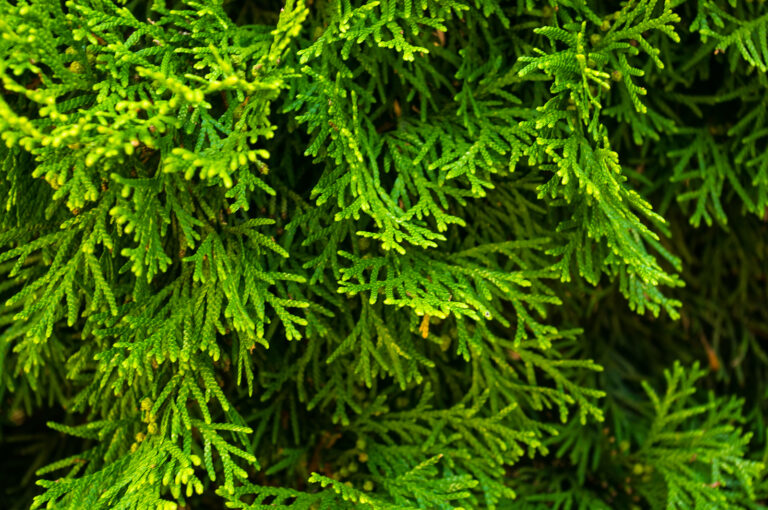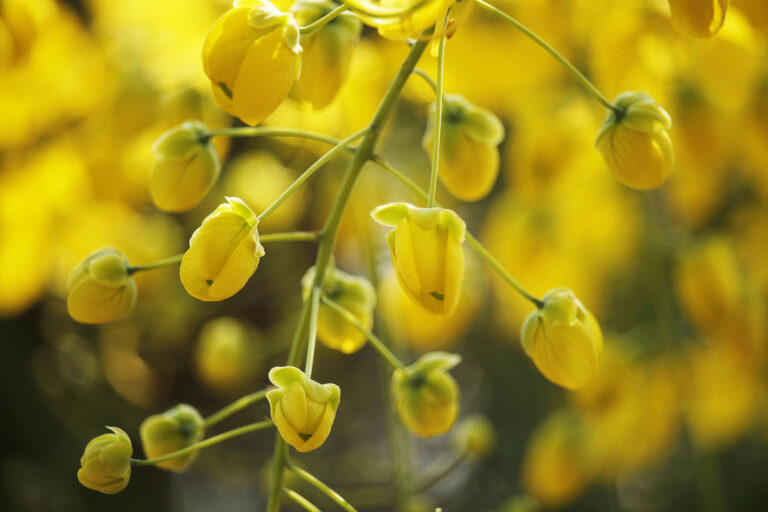How to Grow Pseudolarix – Golden Larch
Pseudolarix, commonly known as golden larch (Pseudolarix amabilis), is a striking, deciduous conifer, unrelated to true larches but sharing similar traits, including golden autumn foliage and soft, needle-like leaves. Native to eastern China, it is an elegant choice for temperate gardens, admired for its symmetrical form, vibrant seasonal changes, and graceful appearance in winter. This long-lived tree adds beauty and structure to landscapes, with foliage that shifts from soft green in spring to lush green in summer, and finally to a bright yellow or golden hue in fall.
Golden larch grows up to 30-40 feet in height and can spread 20-25 feet wide, forming a broadly conical shape that becomes rounded with age. Unlike other conifers, its foliage is soft to the touch, arranged in clusters of needle-like leaves that create a feathery texture. The tree’s bark is an attractive gray-brown color that exfoliates as it matures, adding additional winter interest. Golden larch grows best in USDA hardiness zones 4 through 7, with a preference for climates with cool winters and mild summers.
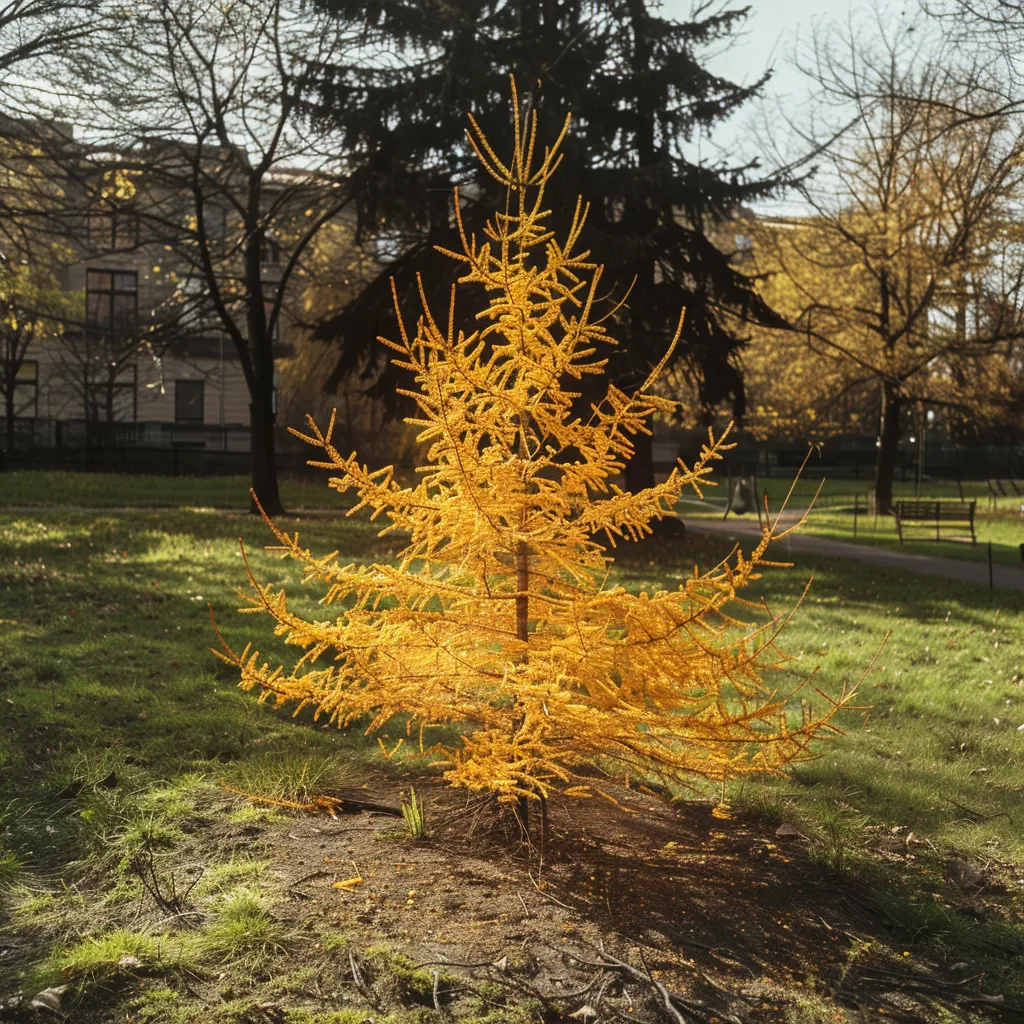
Where to Plant Pseudolarix
Choosing the right spot is critical, as golden larch prefers specific conditions for optimal growth:
- Sunlight: Plant in a location with full sun, as it requires 6-8 hours of direct light to thrive. Partial shade can be tolerated, but it may reduce the vibrancy of fall colors.
- Soil: Golden larch prefers well-draining, acidic to neutral soils (pH 5.5 to 6.5). Although it tolerates clay, it grows best in loamy or sandy soils.
- Moisture: Consistent soil moisture is key, but the site should drain well to avoid waterlogging. Avoid planting in areas prone to flooding or extremely dry spots.
Golden larch’s mature size should also be considered; give it adequate room to develop without crowding other plants or buildings.
When to Plant Pseudolarix
The ideal time to plant Pseudolarix is in early spring or fall, as these seasons allow the roots to establish before the onset of extreme weather. For spring planting, wait until the risk of frost has passed.
Plant Pseudolarix Step-by-Step
- Prepare the Site: Clear weeds and debris from the planting area. Dig a hole twice as wide and as deep as the root ball of the young tree.
- Soil Preparation: Amend heavy clay soils with organic matter (like compost) to improve drainage, or add sand to increase aeration. For sandy soils, mix in compost to help retain moisture.
- Positioning the Tree: Remove the tree from its container, loosening the roots gently. Place it in the center of the hole at the same depth it was in the pot.
- Backfilling: Refill the hole with the excavated soil, pressing it down gently around the roots to eliminate air pockets. Avoid packing the soil too tightly, which can hinder root growth.
- Watering: After planting, water the area thoroughly to help the soil settle and hydrate the roots.
Mulching
Apply a 2-3 inch layer of organic mulch, like bark or leaf mulch, around the base of the tree, leaving a few inches clear around the trunk to prevent rot. Mulch helps retain soil moisture, regulate temperature, and suppress weeds.
How to Care for Golden Larch
Watering
Golden larch prefers consistently moist soil, especially when young. As it matures, it becomes more tolerant of dry spells but still benefits from regular watering.
- Young Trees: Water deeply once or twice a week during dry periods in the growing season, ensuring the moisture penetrates to the root zone.
- Mature Trees: Water only during prolonged dry spells or extreme heat, as mature trees have deeper roots that can access moisture more effectively.
Fertilizing
Pseudolarix doesn’t require heavy fertilization if planted in reasonably fertile soil. However, a light application of balanced, slow-release fertilizer in early spring can promote vigorous growth and enhance foliage color.
- Application: Spread a balanced (10-10-10) fertilizer around the root zone, following the package instructions. Avoid over-fertilizing, which can stress the tree.
Pruning
Golden larch has a naturally symmetrical form that requires minimal pruning. However, occasional maintenance pruning can improve its structure and health.
- Timing: Prune in late winter or early spring when the tree is dormant, and sap flow is minimal.
- Technique: Remove any dead, damaged, or diseased branches. Thin out crowded areas to improve air circulation, which helps reduce disease risk.
Pests and Diseases
Golden larch is generally resistant to pests and diseases but can occasionally be affected by:
- Needle Blight: A fungal disease that causes browning and dropping of needles. Prune affected branches and improve air circulation.
- Aphids and Scale: These insects may occasionally infest the tree. Introduce beneficial predators like ladybugs or use horticultural oil sprays to manage infestations.
Keeping the area around the tree free from fallen leaves and maintaining overall tree health can prevent many common issues.
Propagation of Pseudolarix
Golden larch is primarily propagated by seeds, as cuttings are difficult to root.
- Seed Collection: Collect seeds from mature cones in late fall. Allow them to dry, then store in a cool place until ready to sow.
- Sowing: Sow seeds in a well-draining potting mix and place them in a cold frame over winter to simulate natural conditions. Germination may take several weeks to months.
Using Golden Larch in Garden Design
Golden larch’s distinct seasonal appeal and graceful structure make it a versatile choice in various landscape designs. Here are ways to incorporate it:
Specimen Tree
Golden larch is most often used as a specimen tree due to its standout characteristics. Its vibrant fall color, combined with its symmetrical shape, makes it a striking focal point in lawns, near ponds, or along pathways.
Woodland and Naturalistic Gardens
Pseudolarix fits well in woodland gardens, where its feathery foliage complements other deciduous and evergreen trees. Its golden fall color contrasts beautifully with the darker greens of pines and spruces, creating a layered effect.
Mixed Borders
In large mixed borders, golden larch adds height and seasonal color variation. Pair it with lower-growing shrubs, such as rhododendrons, azaleas, and other acid-loving plants, to create a balanced composition.
Japanese and Asian-Style Gardens
Golden larch’s native origins and architectural form make it a fitting choice for Japanese or Asian-themed gardens. Its seasonal color changes and open structure harmonize with other traditional garden elements like rocks, water features, and gravel pathways.
Rain Gardens and Moisture-Rich Areas
Golden larch can tolerate moist soils, making it suitable for areas prone to occasional flooding. It’s a great choice for planting near water features or rain gardens where the soil remains consistently moist.
Seasonal Interest and Year-Round Beauty
Golden larch’s changing foliage and winter silhouette add year-round interest to the garden. Each season brings a distinct visual change:
- Spring: Soft, green needles emerge, covering the branches with a feathery texture.
- Summer: The foliage deepens to a lush green, providing shade and structure.
- Fall: Needles turn a brilliant yellow to golden color, creating a dramatic autumn display.
- Winter: After the needles drop, the tree reveals its intricate, bare branches and gray-brown bark, which stand out in snowy or frosty landscapes.
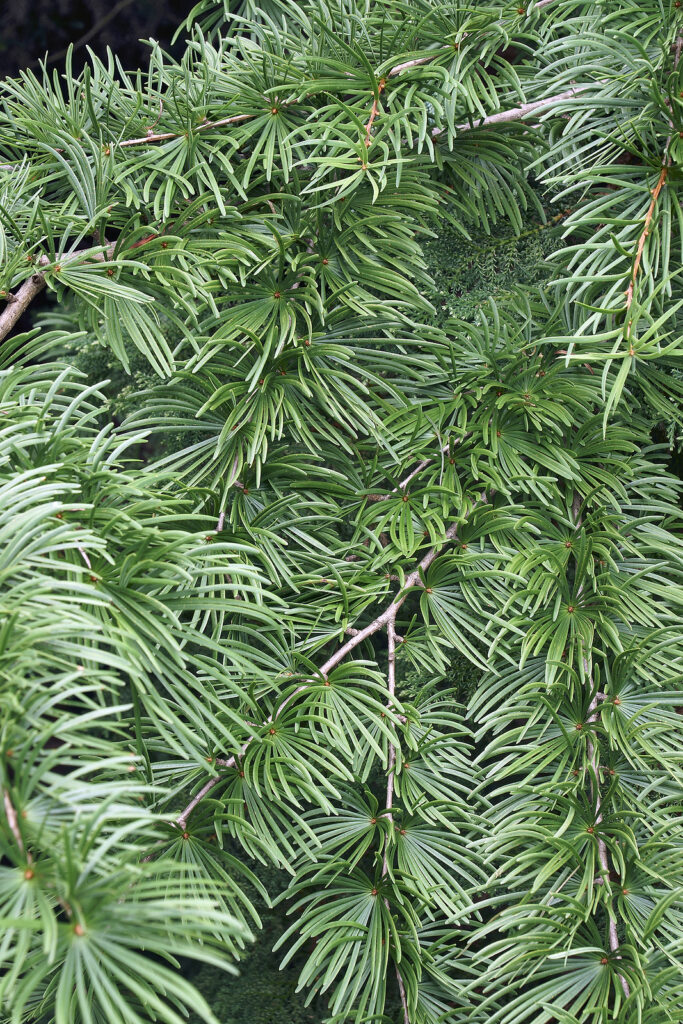
Benefits of Using Golden Larch in the Garden
Golden larch offers many advantages in the garden, including:
- Seasonal Interest: The tree’s unique deciduous habit and vibrant fall color add dynamic interest to the garden.
- Wildlife Support: Golden larch provides shelter for birds and small mammals. Its seeds can attract some wildlife as well.
- Cold Hardiness: Pseudolarix is highly cold-hardy, making it suitable for regions with cold winters and is adaptable to a range of soil types.
- Low Maintenance: With minimal pruning needs and moderate water requirements, golden larch is easy to care for once established.
Potential Challenges with Pseudolarix
Despite its resilience, there are a few considerations to keep in mind:
- Space Requirements: Golden larch grows into a large tree, so it’s best suited for spacious landscapes.
- Needle Drop: As a deciduous conifer, it sheds its needles in fall. While this is aesthetically pleasing, it can require cleanup if planted near walkways or patios.
- Climate: Pseudolarix prefers cooler climates with mild summers and may not thrive in hot, humid regions.
Recommended Pseudolarix Varieties and Cultivars
While there aren’t many cultivars of golden larch, the species itself is naturally beautiful and widely adaptable. Some nurseries may offer grafted varieties that may have slightly different growth habits, but generally, Pseudolarix amabilis in its natural form is ideal for most gardens.
Pseudolarix Summary
Pseudolarix, or golden larch, is a stunning deciduous conifer that brings unique seasonal beauty and structural interest to gardens. With proper placement, care, and attention to soil and water needs, golden larch thrives, becoming a focal point or a complementary feature in a variety of landscape styles.

